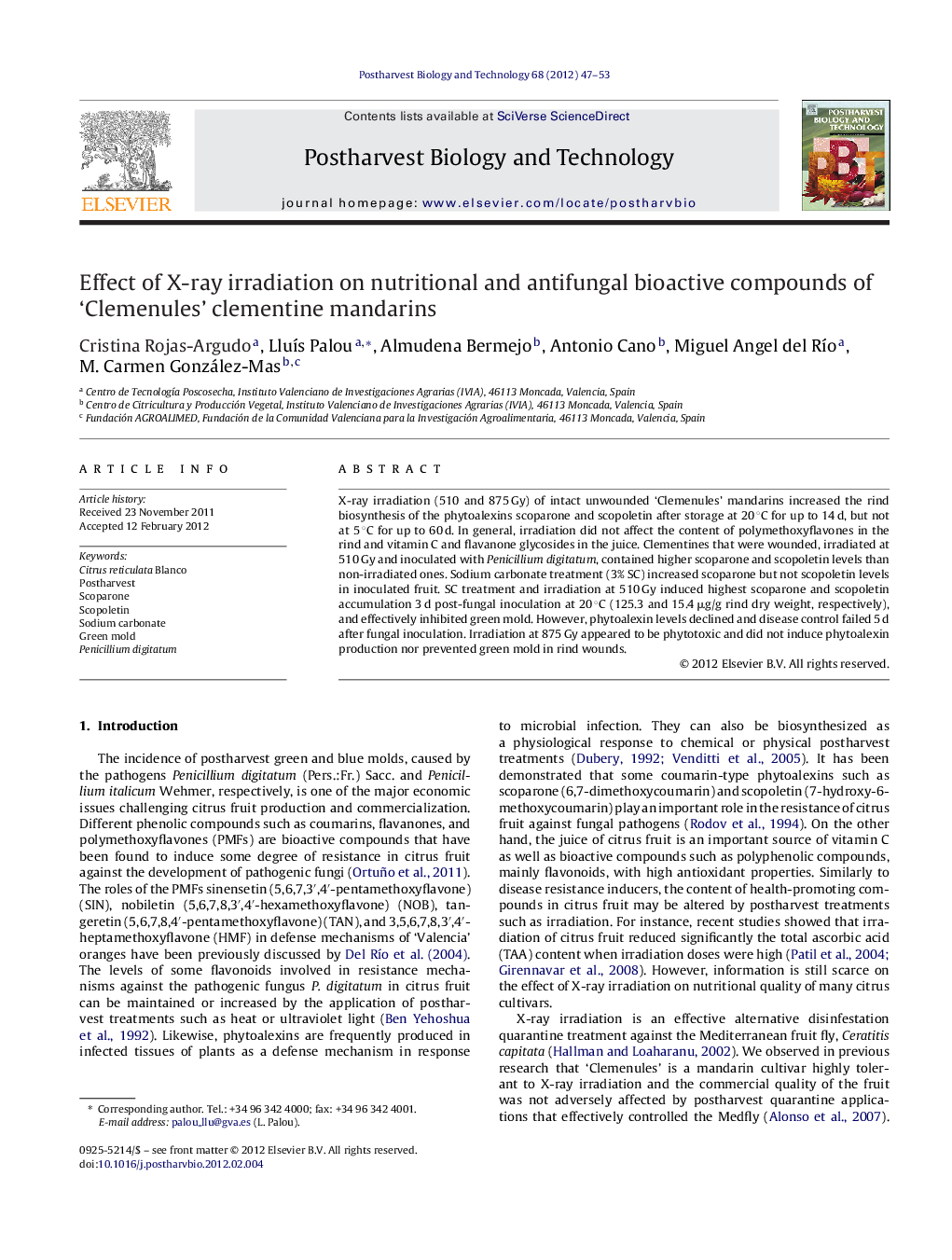| Article ID | Journal | Published Year | Pages | File Type |
|---|---|---|---|---|
| 4518689 | Postharvest Biology and Technology | 2012 | 7 Pages |
X-ray irradiation (510 and 875 Gy) of intact unwounded ‘Clemenules’ mandarins increased the rind biosynthesis of the phytoalexins scoparone and scopoletin after storage at 20 °C for up to 14 d, but not at 5 °C for up to 60 d. In general, irradiation did not affect the content of polymethoxyflavones in the rind and vitamin C and flavanone glycosides in the juice. Clementines that were wounded, irradiated at 510 Gy and inoculated with Penicillium digitatum, contained higher scoparone and scopoletin levels than non-irradiated ones. Sodium carbonate treatment (3% SC) increased scoparone but not scopoletin levels in inoculated fruit. SC treatment and irradiation at 510 Gy induced highest scoparone and scopoletin accumulation 3 d post-fungal inoculation at 20 °C (125.3 and 15.4 μg/g rind dry weight, respectively), and effectively inhibited green mold. However, phytoalexin levels declined and disease control failed 5 d after fungal inoculation. Irradiation at 875 Gy appeared to be phytotoxic and did not induce phytoalexin production nor prevented green mold in rind wounds.
► X-ray irradiation induced nutritional and antifungal compounds in ‘Clemenules’ mandarins. ► Irradiation did not modify polymethoxyflavones in the rind or health-related compounds in the juice. ► Irradiation moderately increased scoparone and scopoletin in unwounded fruit rind. ► Sodium carbonate and irradiation (510 Gy) increased phytoalexins and inhibited green mold temporally. ► Irradiation at 875 Gy was phytotoxic and did not prevent green mold in rind wounds.
